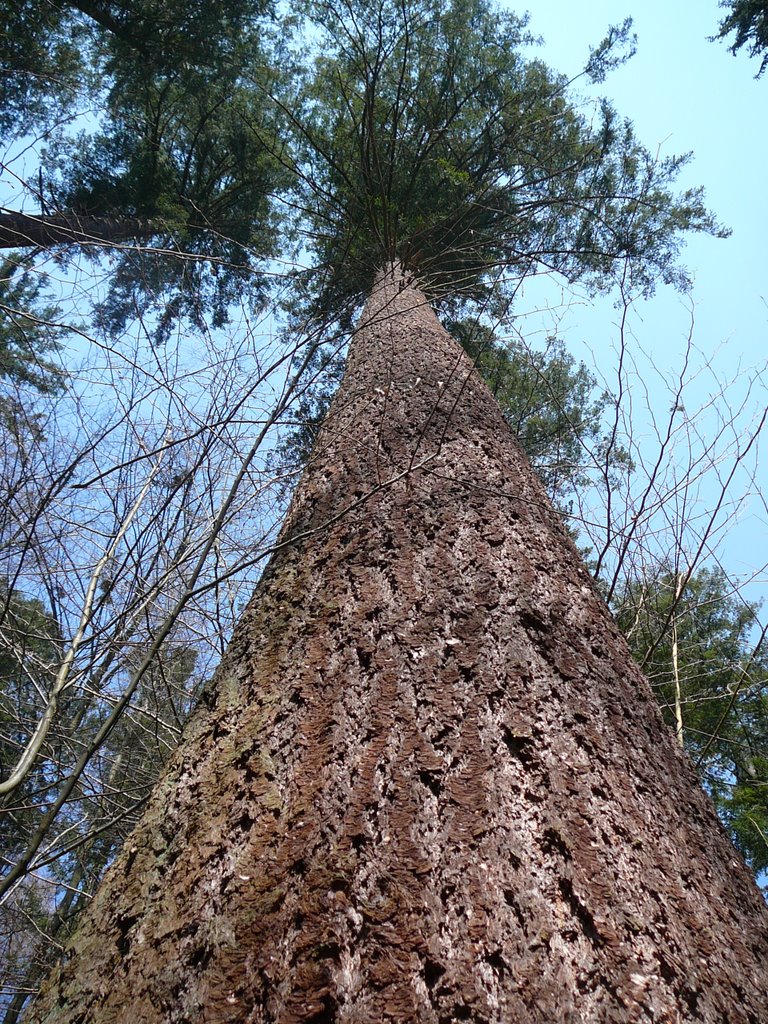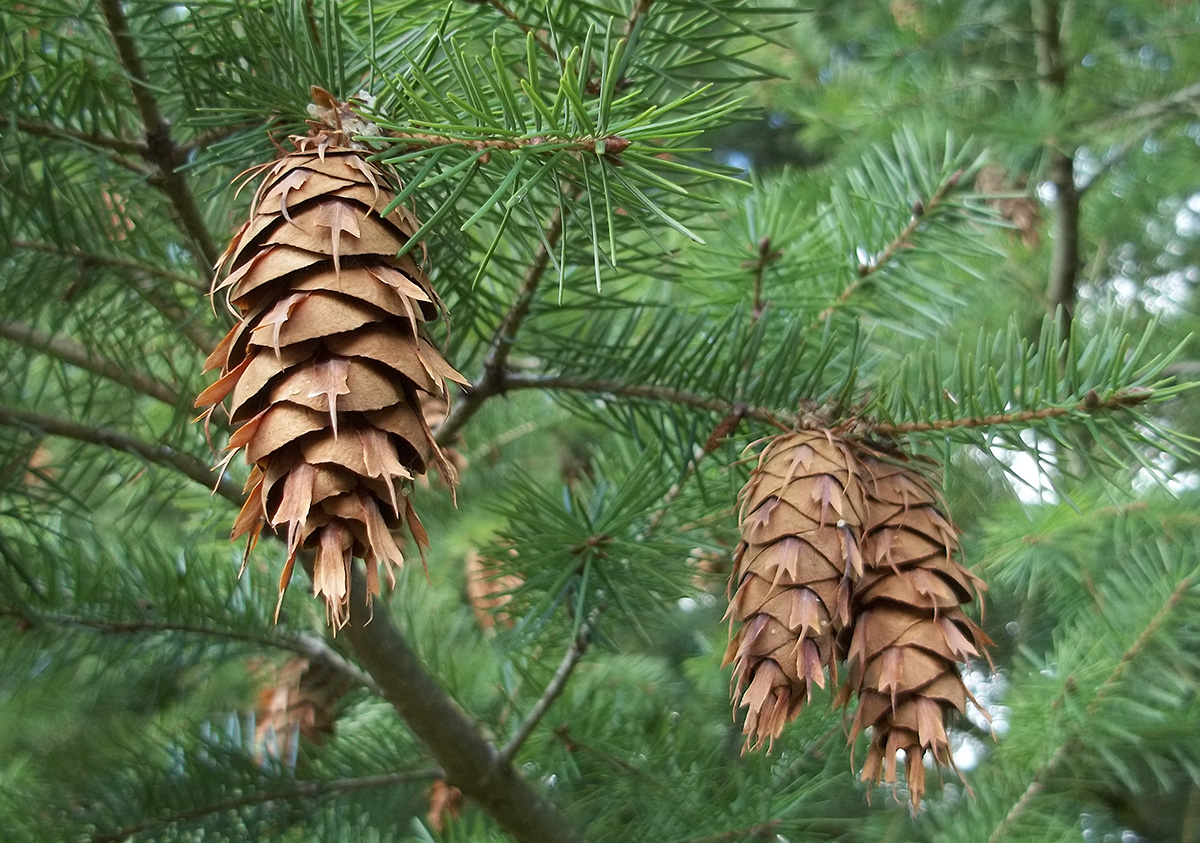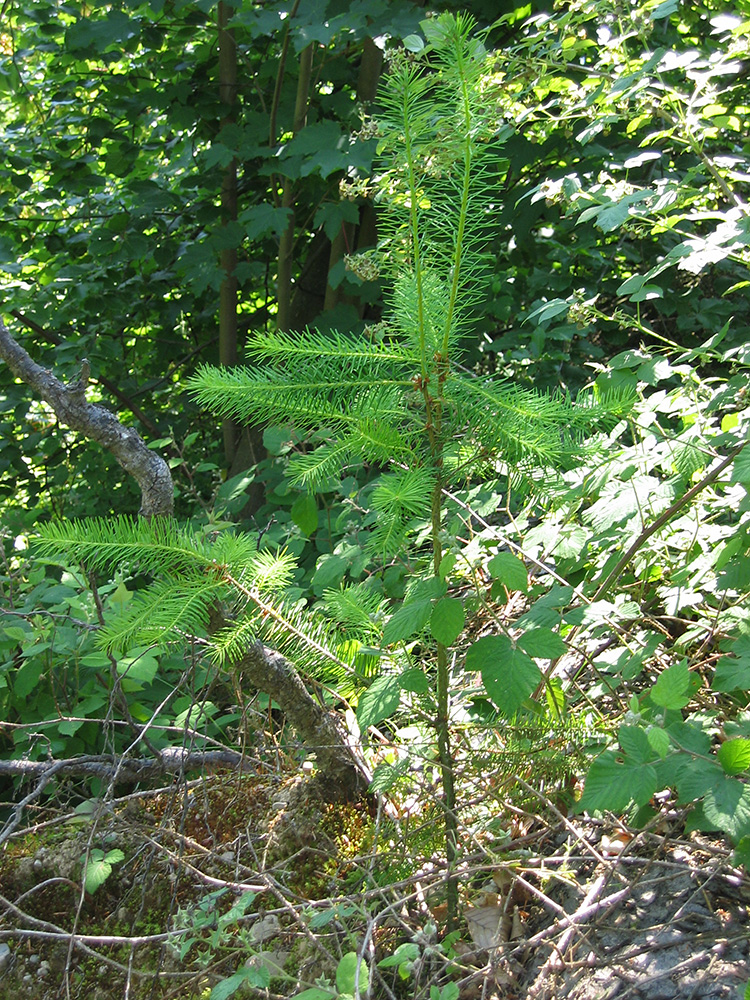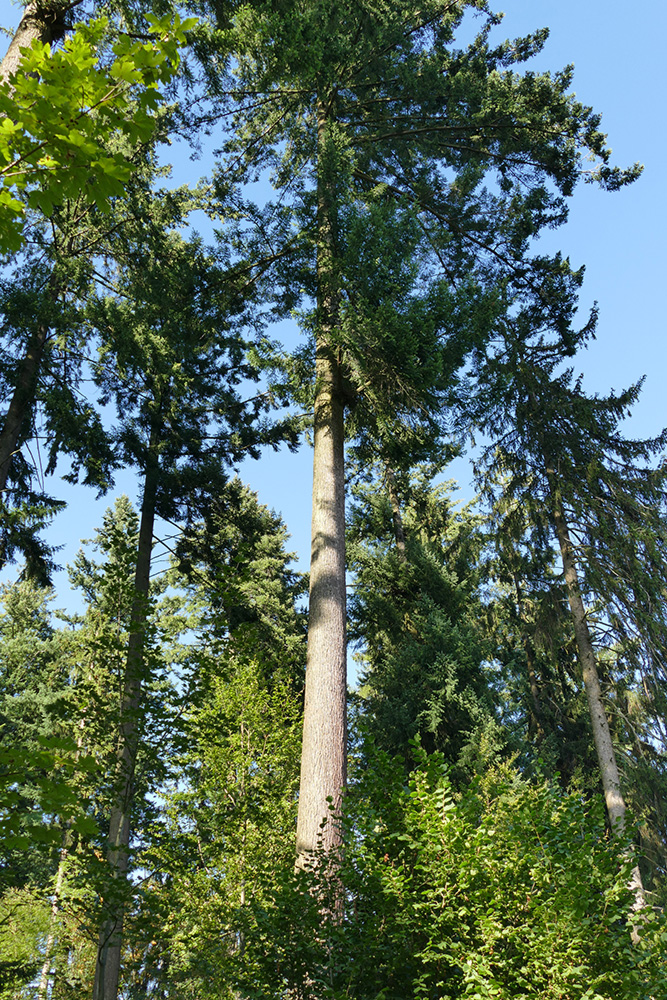A literature review
Douglas fir (Pseudotsuga menziesii) is an often discussed tree species with regard to the expected adaptations of silviculture to climate change. However, nature conservation organiations worry about negative ecological consequences of cultivating this nonnative tree species, e.g. uncontrolled spread of Douglas fir, competition with and threat to native species or the outbreak of new pests and plant deseases.
This literature review has the goal to compile the current knowledge about the impact of Douglas fir on forest biodiversity and habitats and to identify knowledge gaps and research needs. It searched for relevant publications (scientific and grey literature) and focused on Central European forest ecosystems.
The detected studies are summarised and classified into the themes soil, flora, fungi, fauna, natural rejuvenation and conservation biology. More than two third of the found publications originated from Germany, the remaining from France, Switzerland, the Netherlands, Austria and Belgium.

Fig. 1 - Thanks to its characteristics, Douglas fir is an intersting species forsylviculture, especially with regard to predicted climate warming. Photo: Manfred Böcherer, panramio.com
Most important results
Results show that stands of Douglas fir cause an acidification of and a leaching of nutrients in the upper soil. In addition, the humus layer in pure Douglas fir stands is reduced as compared to respective native tree stands. However, it is not clear whether these processes differ from those in native coniferous stands. Litter decomposition in Douglas fir stands is better than in stands of other coniferous trees.
Species richness of the ground vegetation of pure and mixed stands of Douglas fir does not differ from that of mixed native deciduous and coniferous stands. However, species composition and single species occurrences vary considerably. Douglas fir develops species-rich symbioses with mycorrhizal fungi similar to those of spruce and silver fir. Species richness and diversity of the entire fungal community is generally smaller in Douglas fir stands, which mainly provide habitat for generalist fungal species.
The abundance and activity of bird species vary with season and age of Douglas fir stands. Old-growth stands show similar or partly higher abundances and species diversity than native coniferous stands. Younger stands show a trend to harbour fewer bird species. During winter, only few bird species occur in the canopy of Douglas fir because arthropods generally show a low abundance on Douglas fir, in particular on the trunk. Overall, there is a shift in species composition and dominance ratio of the arthropod fauna in stands of Douglas fir.
Natural regeneration of Douglas fir has been observed in almost all study areas, in particular on dry, acid and rather poor sites. There, Douglas fir is competitive and may displace other tree species. Douglas fir fructifies early, and its seeds are dispersed up to 200 m. Disturbed soil is ideal for germination, and abundant light conditions push the rejuvenation of Douglas fir.
Conclusions
In summary, this study shows that Douglas fir provides habitat for a large number of native, but often generalist animal, plant and fungal species. However, the cultivation of Douglas fir often causes changes in species composition. Specific species or species groups are either less or more frequent in Douglas fir stands, and trophic relationships are considered to be less complex. Distinct trends are, however, not obvious.
In many studies, the reference system for comparison was not well defined, but when comparing Douglas fir stands with spruce stands, few negative effects are generally detected.
None of the authors argues for a total ban of Douglas fir in Central European silviculture. However, they agree that a potential increase in the cultivation of Douglas fir should only take place with constraints, such as a maximum mixture-ratio, limitation to rich and humid sites and a ban from nature reserves and their surroundings. The second constraint is contradictory with the intention of forestry organiations to promote Douglas fir as a fast-growing and drought-resistant alternative to Norway spruce under climate change.
So far, there is no evidence that the cultivation of Douglas fir is not compatible with broadly-accepted definitions of multi-functional sustainable forestry. However, specific impacts of the cultivation of Douglas fir in Central Europe cannot be considered based on the available literature. There is thus need for further research that accounts for sitespecific rejuvenation and the dispersal potential of Douglas fir and the impact of various mixture-ratios on forest biodiversity in general and threatened species in particular.



